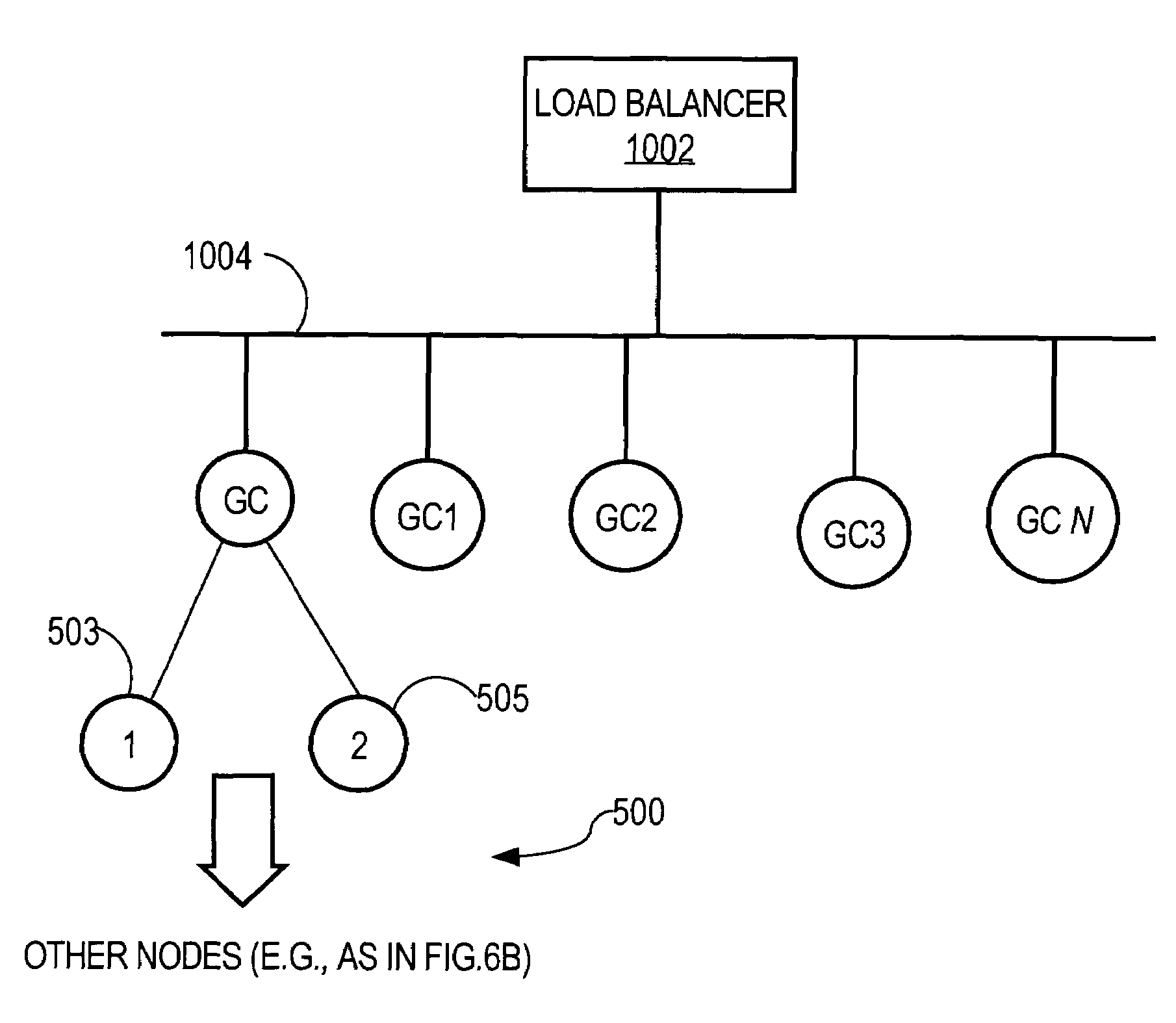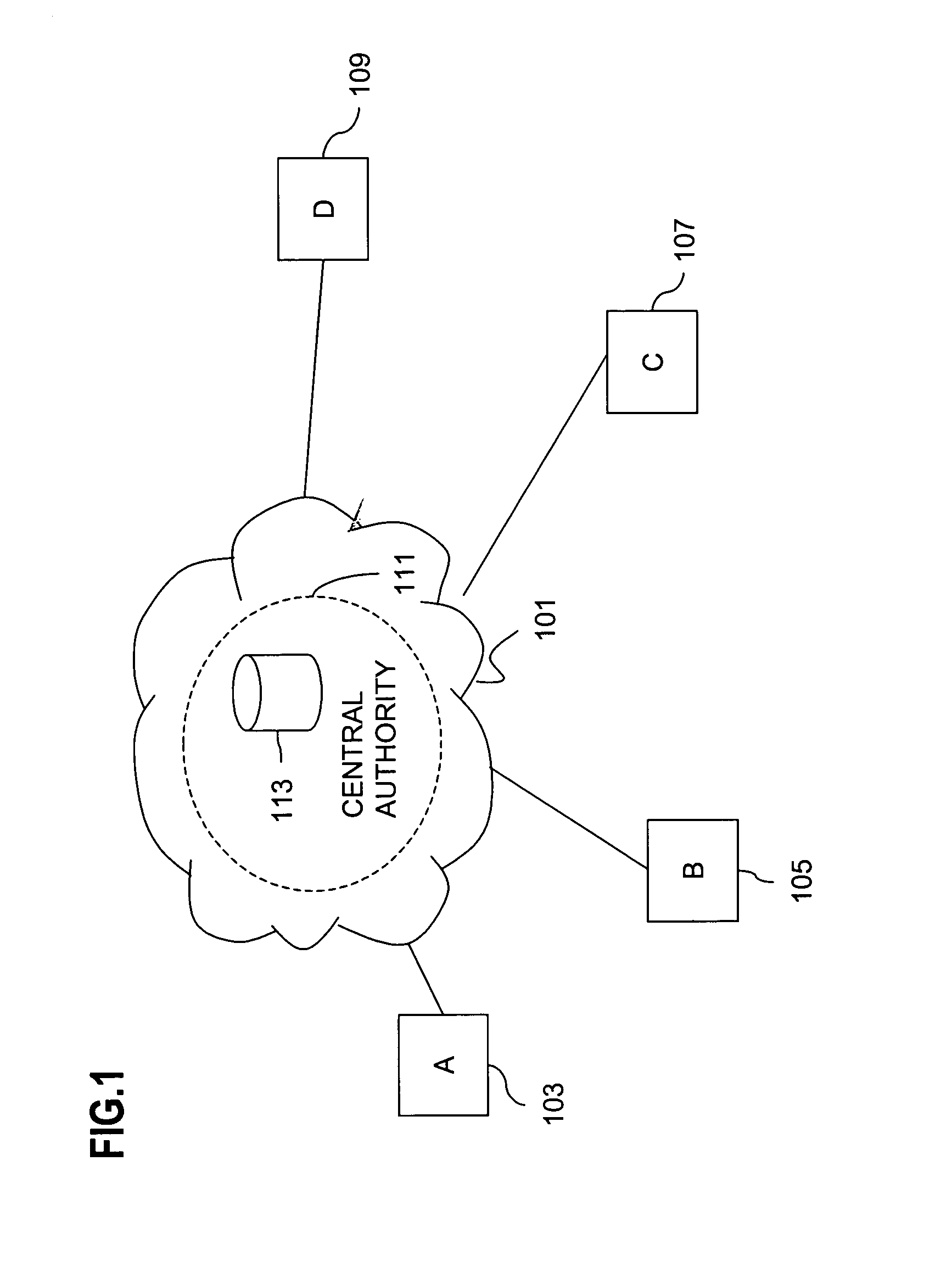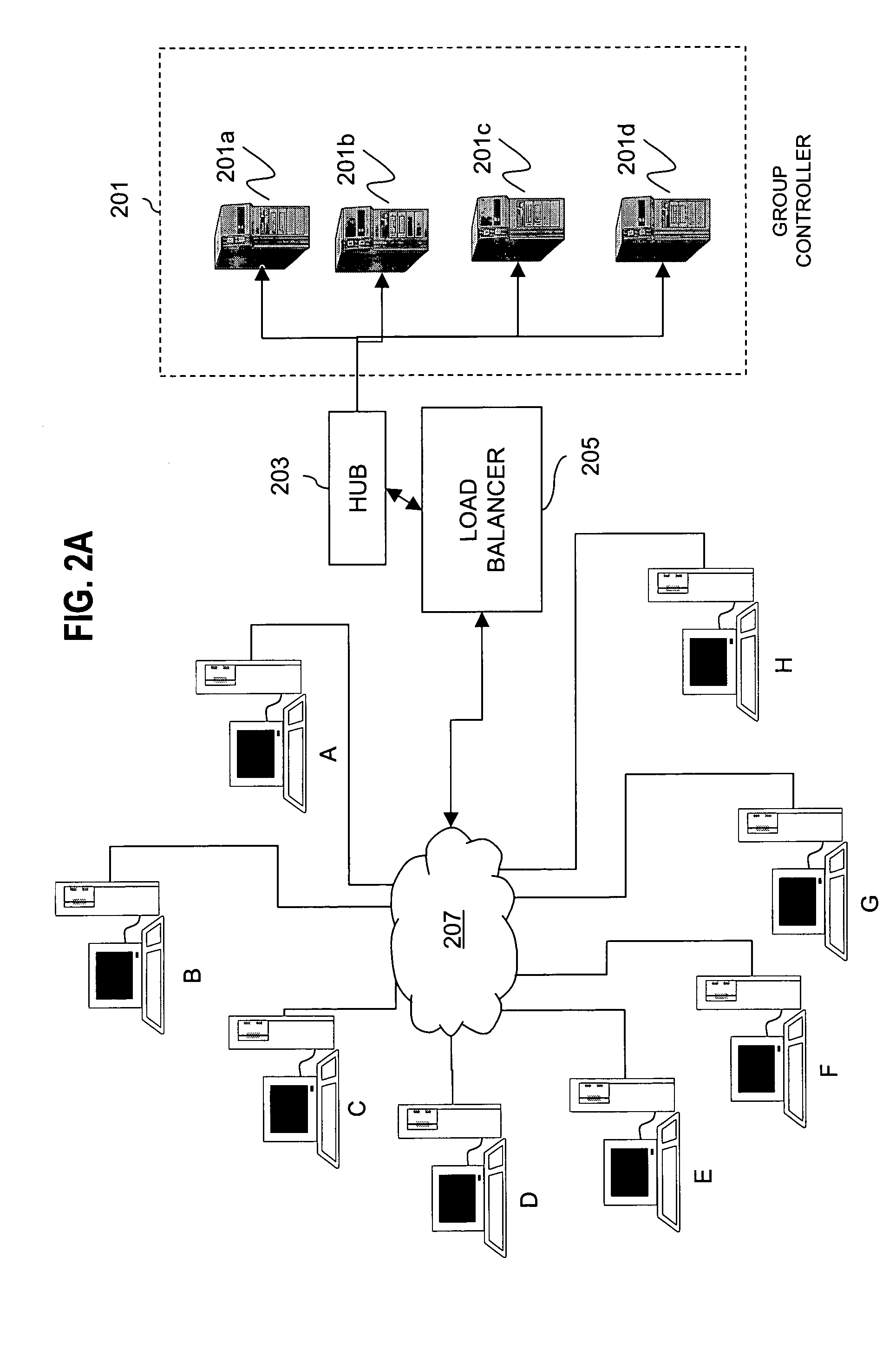Method for overcoming the single point of failure of the central group controller in a binary tree group key exchange approach
a key exchange and central group controller technology, applied in the field of secure network communication systems, can solve the problems of inability to use standard algorithms, undue strain on network resources, and inability to scale up, so as to achieve the effect of being easily scalabl
- Summary
- Abstract
- Description
- Claims
- Application Information
AI Technical Summary
Benefits of technology
Problems solved by technology
Method used
Image
Examples
Embodiment Construction
[0044]In the following description, for the purposes of explanation, specific details are set forth in order to provide a thorough understanding of the invention. However, it will be apparent that the invention may be practiced without these specific details. In some instances, well-known structures and devices are depicted in block diagram form in order to avoid unnecessarily obscuring the invention.
[0045]An approach for creating a secured multicast or broadcast group in a communications network uses a distributed system to disseminate and update group session keys. To establish a secured channel among the participating multicast group members, a group controller approach is used. However, functionality of the group controller is distributed across multiple entities, which themselves communicate over a secure channel. The entities, which make up the group controller, use various key exchange algorithms to securely communicate. The key exchange protocols generate session keys based ...
PUM
 Login to View More
Login to View More Abstract
Description
Claims
Application Information
 Login to View More
Login to View More - R&D
- Intellectual Property
- Life Sciences
- Materials
- Tech Scout
- Unparalleled Data Quality
- Higher Quality Content
- 60% Fewer Hallucinations
Browse by: Latest US Patents, China's latest patents, Technical Efficacy Thesaurus, Application Domain, Technology Topic, Popular Technical Reports.
© 2025 PatSnap. All rights reserved.Legal|Privacy policy|Modern Slavery Act Transparency Statement|Sitemap|About US| Contact US: help@patsnap.com



